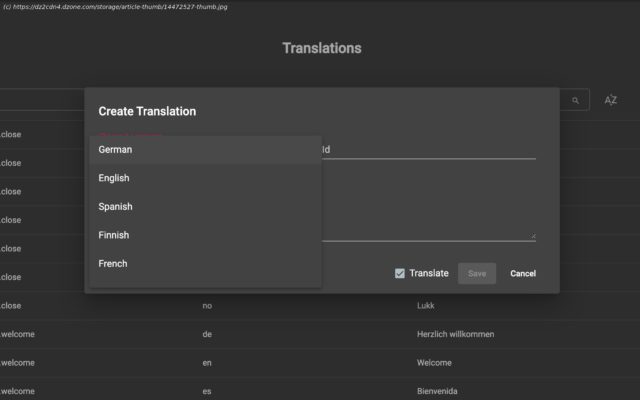Join the DZone community and get the full member experience.
Yesterday my manager spent half the day cleaning up our translation database. His primary tool …
Join the DZone community and get the full member experience. Yesterday my manager spent half the day cleaning up our translation database. His primary tool of choice was SQL insert, update, and delete statements, combined with Microsoft SQL Server Manager Studio. But before you laugh, realise that this is a job I’ve done myself dozens of times, due to the lack of Micro Service components, solving these types of problems out of the box. Of course the idea is to end up with only the English entities in our database, export them as a CSV file, send them to our employees responsible for translating our items into Japanese, Portuguese, and God knows what – For then to import the result back into our database. Yes, I know! Sigh! Typically this process is highly manual, involves dozens of people, requiring weeks of work hours for our employer in process. If you don’t recognise this problem, you’re either working for an employer not needing things to be translated – Or you are not an experienced enterprise software developer. The problem with the problem, is that it’s a no-problem really, and should have been permanently solved a long time ago, freeing up resource for all those involved. The solution of course it to create Micro Service components, with a GUI, allowing us to optimise the process of translating entities by 2 order of magnitudes. Hence, a simple administrative tool such as the one shown below, would easily free up hundreds of man hours every year for my employer. Creating these types of « micro service apps » of course is ridiculously easy using Magic, since once the scaffolder process is done,99% of the code is done.
Home
United States
USA — software Patterns of Enterprise Software Development – Babelfish, localising your apps






